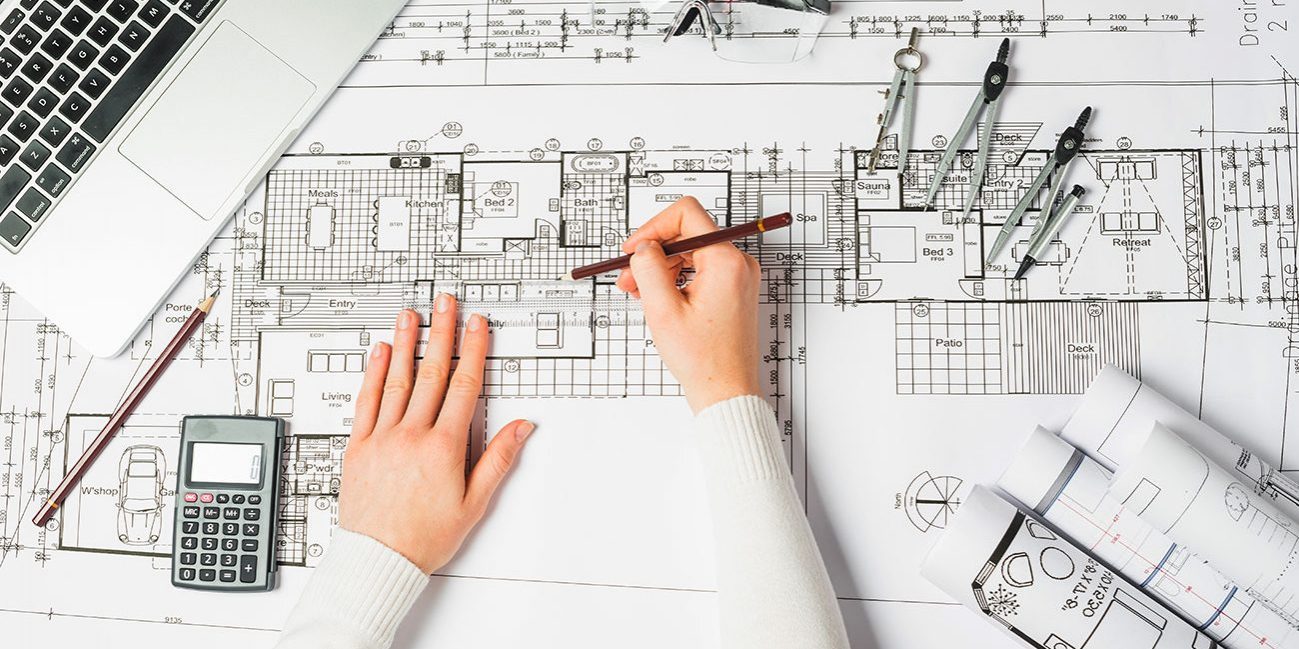Understanding the Diverse Job Paths Available for Aspiring Architect
As an aspiring Architect, you have a globe of occupation paths waiting for you. Each course uses unique difficulties and opportunities to apply your imagination and technical knowledge. Whether you're drawn to typical design or the nuances of sustainable design, there's a niche that straightens with your rate of interests. Comprehending these diverse options can shape your specialist journey, however which instructions will you select to explore first?
Standard Design: Designing Structures and structures
Typical style focuses on creating structures and frameworks that blend performance with aesthetic allure. As you explore this field, you'll appreciate the detailed equilibrium between kind and function. You'll learn to attract inspiration from historic styles, including elements like proportion, products, and craftsmanship. Your layouts can mirror cultural heritage, showcasing regional practices while meeting modern requirements.
You'll create abilities in preparing, model-making, and site analysis, allowing you to imagine and communicate your ideas successfully. Involving with clients, you'll require to comprehend their vision and translate it right into possible layouts.
Moreover, constructing codes and sustainability techniques are vital in your work, ensuring your structures are safe and environmentally pleasant. As you expand in your career, you'll locate possibilities in property, commercial, and even repair jobs, each offering one-of-a-kind challenges. Accepting typical style leads the way for a meeting profession that pays homage to the past while forming the future.
Urban Planning: Shaping Communities and Public Spaces
As an aspiring Architect, you can play an essential function as an urban coordinator, changing exactly how areas function and engage. By using community involvement strategies, you'll assure that citizens have a voice fit their environment. Plus, integrating sustainable style principles will help produce areas that not just satisfy today's demands yet additionally secure the future.
Function of Urban Planners
While many could believe of designers as the single enthusiasts behind buildings, city coordinators play a crucial role fit the broader landscape of neighborhoods and public rooms. They examine land use, zoning laws, and neighborhood needs to develop lasting atmospheres that boost lifestyle. By working together with various stakeholders, you'll assist create parks, transport systems, and houses that promote social interaction and availability. Urban coordinators also concentrate on ecological factors to consider, ensuring that developments integrate environment-friendly rooms and assistance biodiversity. Your competence in spatial style and neighborhood characteristics permits you to visualize future growth while preserving cultural heritage. In this vital duty, you'll directly influence just how people experience their surroundings, making every job a chance for positive modification.
Community Involvement Approaches
Efficient community engagement techniques are vital for urban organizers to assure that the voices of homeowners are heard and valued in the planning procedure. To foster purposeful dialogue, you need to prioritize open online forums and workshops where area members can share their ideas and problems. By proactively listening and including responses, you'll create spaces that mirror the community's needs, ultimately leading to more effective and sustainable urban environments.
Sustainable Design Concepts
When creating city areas, including sustainable design concepts is vital for developing settings that prosper both environmentally and socially. Take into consideration integrating eco-friendly areas, like parks and gardens, to improve biodiversity and improve air quality.
Designing with water conservation in mind is likewise essential-- consider rainfall yards and absorptive surface areas to handle stormwater. Including community members throughout the preparation process assurances that the spaces you develop meet their requirements and urge social interaction. By accepting these principles, you'll add to vivid, sustainable urban landscapes that benefit everyone.

Landscape Design: Producing Sustainable Outside Atmospheres
As you check out landscape architecture, you'll uncover important design concepts that create functional and attractive outside areas. Sustainable methods play an important role in making sure these atmospheres thrive while decreasing environmental influence. And also, you'll find a selection of career opportunities that allow you to make a real distinction in just how people engage with nature.
Layout Principles in Landscape
Recognizing layout concepts in landscape design is crucial for developing lasting outside atmospheres that balance with nature. You'll need to consider aspects like range, balance, and proportion to assure your styles feel cohesive and inviting. In addition, pay interest to seasonal changes, creating with products that complement the surroundings year-round.
Lasting Practices Introduction
Sustainable methods in landscape style not just focus on aesthetic appeals yet also prioritize environmental wellness and source conservation. You can develop rooms that advertise soil health, such as utilizing natural products and practicing permaculture concepts. Ultimately, these practices guarantee your styles benefit both individuals and the atmosphere for years to come.
Job Opportunities Expedition
With a strong foundation in lasting techniques, landscape architecture provides a range of occupation courses that enable you to make a purposeful influence on the atmosphere. You might function as a landscape developer, developing cosmetically pleasing and practical exterior areas, or focus on environmental reconstruction, aiding to revitalize broken ecosystems. Urban planners frequently collaborate with landscape architects to develop environment-friendly rooms in metropolitan setups, improving city livability. If you're passionate regarding education, consider becoming a landscape style teacher, inspiring future generations. Additionally, you might collaborate with nonprofits concentrated on environmental sustainability or participate in research to introduce new practices. Each course not only forms stunning environments however also promotes a much healthier earth for future generations.
Lasting Design: Concentrating on Eco-Friendly Practices
As you explore your occupation in architecture, accepting environment-friendly techniques can set you apart in an affordable area. Sustainable layout concentrates on producing structures that minimize environmental influence while enhancing passenger well-being. By integrating eco-friendly products, energy-efficient systems, and sustainable building strategies, you'll contribute to a greener future.
Begin by gaining understanding of environment-friendly certifications like LEED or BREEAM, which can strengthen your credentials. Think about just how natural light, air flow, and thermal performance can optimize design. Work together with designers and ecological specialists to introduce remedies that lower waste and conserve resources.
Don't fail to remember the value of area involvement-- appealing regional stakeholders can influence layouts that integrate with the atmosphere. As customers significantly focus on sustainability, your competence in environment-friendly techniques will certainly not just draw in jobs however likewise meet your enthusiasm for accountable design. Welcome this essential aspect of the profession, and watch your career flourish.
Historical Conservation: Securing and Bring Back Cultural Heritage
While you commence on your architectural trip, take into consideration the necessary function of historic preservation in keeping our social heritage. This field concentrates on the protection and restoration of significant structures, websites, and structures that inform the tales of our past. By engaging in historic preservation, you'll assist protect the architectural legacy that forms area identification.
As a historic conservation Architect, you'll examine historical significance and analyze the condition of frameworks. You'll work very closely with preservationists and historians to assure authentic restoration methods are used. This profession course allows you to mix creativity with study, enabling you to make services find out this here that value original products and workmanship.
Your work not just adds to sustainability by reusing existing structures yet also promotes a feeling of pride within neighborhoods. Welcoming this course will assist you come to be a check out here guardian of background, preserving the stories and aesthetic appeals that improve our lives.
Interior Design: Enhancing Indoor Spaces
Historical conservation and indoor architecture both share a commitment to improving the constructed environment, but they concentrate on different aspects. While historic preservation stresses keeping a structure's historical and cultural worth, indoor style absolutely nos in on optimizing indoor areas for performance and visual appeals.
As a hopeful Architect, you'll discover that indoor design permits you to mix creative thinking with technological abilities. You'll make rooms that not just look excellent but also promote convenience and efficiency. This area entails understanding how light, shade, and materials interact within a room, influencing state of mind and use.
You'll deal with numerous tasks, from household homes to business workplaces, making certain that each setting satisfies the demands of its owners. By focusing on individual experience, you can transform interiors into practical and inspiring spaces, making a significant influence on how individuals engage with their surroundings. Embrace the possibility to improve indoor settings and form the way people live and function.
Industrial Design: Combining Performance With Aesthetic Appeals
Industrial layout plays an essential duty in producing items that flawlessly blend aesthetic appeals with functionality, making sure that what you use daily is not only aesthetically enticing however also practical. As an ambitious Architect, you could engage yourself in this field, concentrating on making whatever from furnishings to consumer electronics. Your job involves recognizing user demands, materials, and making processes, permitting you to create ingenious options that improve daily experiences.
In industrial design, you'll typically work together with designers, producers, and marketing experts, making certain that your layouts are not just beautiful yet additionally practical. This occupation path offers a vibrant atmosphere where creativity meets usefulness, making it a satisfying option for architects interested in forming the products of tomorrow.
Often Asked Questions
What Educational Qualifications Do I Required to Become an Engineer?
To end up being an architect, you'll require an expert degree in design, usually a Bachelor's or Master's. Additionally, you'll need to complete a teaching fellowship page and pass the Architect Enrollment Assessment to practice lawfully.
Are There Qualification Requirements for Various Architectural Job Paths?
Yes, there're accreditation needs for different building paths. Architect. You'll require to pass examinations, complete teaching fellowships, and sometimes seek specialized training, depending on your picked focus, like landscape style, metropolitan layout, or historical conservation
What Software Application Skills Are Vital for Architects Today?

Just How Can I Gain Practical Experience While Examining Style?
You can get practical experience by interning at building firms, joining design competitions, volunteering for area projects, or teaming up with classmates on real-world tasks. These opportunities improve your skills and develop valuable connections in the sector.
What Task Opportunities Exist Outdoors Traditional Design Firms?
You can explore various job chances outside traditional design companies, like urban planning, interior decoration, landscape architecture, building and construction management, realty growth, and even roles in sustainability consulting. Each deals one-of-a-kind challenges and benefits.
Whether you're attracted to traditional design or the subtleties of lasting layout, there's a specific niche that lines up with your passions.When designing urban areas, including lasting layout concepts is essential for producing settings that grow both ecologically and socially.As you explore landscape architecture, you'll find necessary layout concepts that develop beautiful and functional outside areas.Comprehending style concepts in landscape design is necessary for developing lasting exterior settings that integrate with nature.In commercial style, you'll commonly team up with producers, engineers, and online marketers, making sure that your styles are not only gorgeous yet additionally viable.